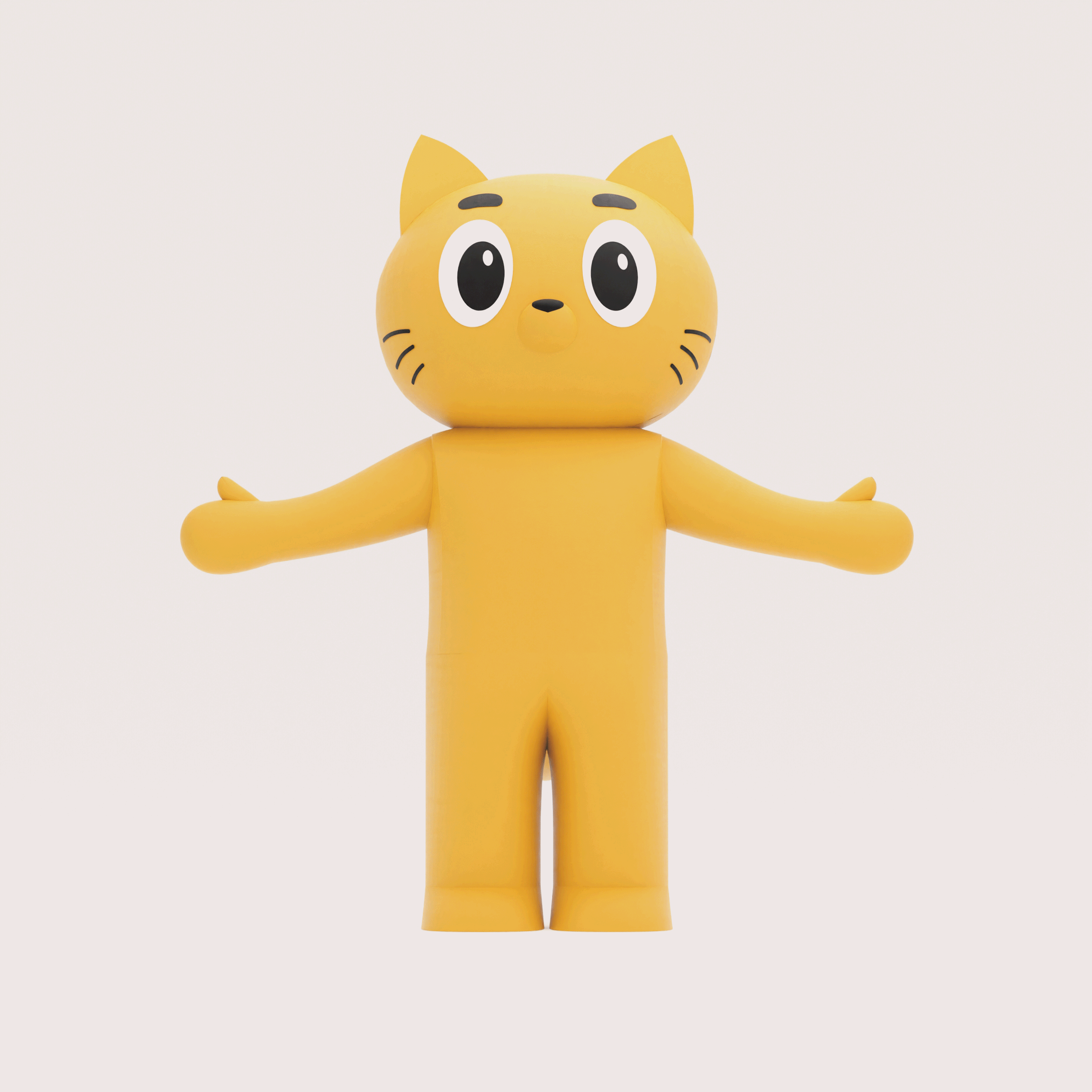Worried about the electricity costs of using inflatables for your event?
Let's clear the air!
Many of our customers inquire about the energy consumption of our custom inflatables, so you're in good company.
Do inflatables use a lot of electricity?
No, inflatables generally do not use a lot of electricity. Continuous air inflatables, for instance, are quite energy efficient, consuming just about 250 watts per hour. To put it in perspective, running one continuously for 24 hours would only set you back approximately $1.01, based on the average electricity rate of 16.88 cents per kWh in 2024.
As for sealed air inflatables, they are even more economical, needing minimal power only during the initial setup - a mere $0.014 for 20 minutes of inflation.
Let's get into the nitty-gritty of how much power commercial inflatables need and show you some examples of them at real events.
 Stand out with our inflatable arches, customized to any shape and size for your event.
Stand out with our inflatable arches, customized to any shape and size for your event.Customize Inflatable Arch
Understanding the Electricity Needs of Commercial Inflatables
Understanding the electricity requirements for commercial inflatables such as arches, tunnels, mascots, logos, and product replicas is crucial for efficient event planning.
Here’s what you need to consider:
1. Type of Inflatable: Continuous vs Sealed Air
Continuous Air Inflatables require the blower to run continuously to maintain their shape, consuming a steady amount of electricity over the period they are inflated.
Sealed Air Inflatables are inflated once and then sealed, requiring no further electricity to stay inflated. This makes them more energy-efficient for long-term use.
2. Power requirements and Setup

Blower Specifications: Each of our inflatables is typically equipped with a 250-watt blower. This blower can operate on a standard 15-amp circuit. However, if you have multiple inflatables or other equipment running on the same circuit, ensure the total power draw does not exceed the circuit's capacity. For larger inflatables requiring higher capacity blowers, a circuit with a higher amperage might be necessary.
Power Source and Safety Measures: To handle the heat generated by the blowers and ensure safety, always use heavy-duty extension cords. Ensure these cords are rated for outdoor use and have a sufficient amperage rating of at least 15 amps to prevent overheating and hazards.
Proper grounding is essential; use cords with three-prong plugs and outlets to reduce the risk of electrical shock. To avoid overloading circuits, plug each blower into a separate circuit. For outdoor events, use Ground Fault Circuit Interrupter (GFCI) outlets to enhance safety. Additionally, keep cords and blowers dry and protected from rain to prevent electrical issues.
Generator Use: If an inflatable is over 50 feet away from a power source or if no outlets are available, a generator is required. We recommend using a generator with at least 650 watts per blower to avoid power shortages.
3. Dedicated Circuits
A dedicated circuit ensures that no other devices draw power from the same source, which is crucial for avoiding power disruptions and circuit overloads. For optimal stability and performance, connect each inflatable to its own dedicated circuit. This is particularly important when multiple inflatables are used simultaneously, as it prevents power fluctuations and ensures each blower operates efficiently.
When considering how many inflatables can be connected to one outlet, it’s best to use dedicated circuits for each inflatable to avoid overloading a single outlet. Using dedicated circuits reduces the risk of tripping breakers and provides a safer, more reliable power supply for your event.

How Much Power Do Continuous Air Inflatables Really Use?
Continuous air inflatables require a blower to run continuously to maintain their shape, which means they consume electricity steadily throughout the event.
Average Running Watts
MVP Visuals’ continuous air inflatables come equipped with a 250-watt blower. This blower is designed to provide sufficient airflow to keep the inflatable fully operational while being energy-efficient. The blower consumes 250 watts per hour of operation.
Practical Examples of Electricity Usage
To give you a clearer picture of the electricity costs, we’ve provided a table below detailing the power consumption and cost for running one 250-watt blower over various event durations. These calculations are based on the average electricity rate of 16.88 cents per kWh in 2024.
Even for extended events, the cost of running a continuous air inflatable remains relatively low.
| Event Duration | Electricity Consumption (kWh) for One 250-Watt Blower | Cost at $0.1688 per kWh |
| Short Event (4 hours) | 1 kWh | $0.1688 |
| Medium Event (8 hours) | 2 kWh | $0.3376 |
| Full-Day Event (12 hours) | 3 kWh | $0.5064 |
| Extended Event (24 hours) | 6 kWh | $1.0128 |
How Much Electricity Do Sealed Air Inflatables Consume?

Sealed air inflatables are designed to be inflated once and then sealed, requiring no further electricity to stay inflated. This makes them an energy-efficient option for events, especially those lasting several hours or days. The power required for the initial inflation is minimal, and the lack of ongoing electricity consumption makes them an ideal choice for extended events.
Initial Inflation Power Requirements
Our sealed air inflatables also come with a 250-watt blower used for the initial inflation. The blower needs to be operated only during the setup phase, consuming power briefly compared to continuous air inflatables.
Practical Examples of Initial Inflation
Here are some examples of the electricity usage for the initial inflation of sealed air inflatables based on typical setup durations, calculated at the average electricity cost of 16.88 cents per kWh:
| Inflatable Size | Inflation Time | Electricity Consumption (kWh) | Cost at $0.1688 per kWh |
| Small Product Replica | 10 minutes | 0.042 kWh | $0.0071 |
| Medium Inflatable Tunnel | 20 minutes | 0.083 kWh | $0.0140 |
| Large Inflatable Arch | 30 minutes | 0.125 kWh | $0.0211 |
No Ongoing Electricity Consumption
Once inflated, sealed air inflatables require no further electricity to maintain their shape. This makes them highly energy-efficient. The initial inflation cost is minimal, and there are no ongoing operational costs related to electricity.
These calculations illustrate the significant cost savings offered by sealed air inflatables.
 Custom inflatable mascots are perfect for making your brand stand out and connecting with your audience.
Custom inflatable mascots are perfect for making your brand stand out and connecting with your audience.Shop Custom Inflatable Mascot
Scenarios Where Each Type May Be More Advantageous
Both continuous air and sealed air inflatables have their unique advantages depending on the event's requirements. Continuous air inflatables provide consistent visual impact and are ideal for short-term, high-traffic events. In contrast, sealed air inflatables offer significant cost savings and energy efficiency for long-term displays.
1. Short-Term, High-Impact Events:
Choose Continuous Air: For events requiring a strong visual presence and where the inflatables are critical to the event’s atmosphere, continuous air inflatables are preferable. Their constant airflow ensures they remain fully inflated and visually impressive.
2. Long-Term, Cost-Conscious Events:
Choose Sealed Air: For events that span multiple days or where energy efficiency is a priority, sealed air inflatables are the better choice. They save on electricity costs and require less maintenance once inflated.
3. Remote or Outdoor Events:
Choose Sealed Air with Generators: In scenarios where access to a continuous power source is challenging, sealed air inflatables powered by generators for initial inflation can be very effective. This reduces the need for large generators and continuous fuel supply.
4. High Traffic and Interactive Events:
Choose Continuous Air: For events where inflatables are subject to frequent interaction or need to withstand dynamic environments, continuous air inflatables offer the durability and reliability needed.



